
Without a doubt, water is the most abundant resource on Earth. After all, it covers over 70% of the planet - yet despite this we are facing a looming crisis as a species.
Climate change, global conflict and overpopulation are just some of the factors that are devastating the water supply in many areas around the world. It means that two billion people - one-quarter of the human population - are without access to safe drinking water.
As the world's population creeps ever closer to eight billion, attention is being focused on developing technologies that can help address this before it is too late.
One of those offering a potential solution is Michael Mirilashvili, head of Watergen, an Israel-based firm that is using its air-to-water technology to deliver the drinking water to remote areas of the world hit by conflict or climate change.
'Basic human right'
"Water is a basic human right, and yet millions don't have access to it," he tells the BBC.
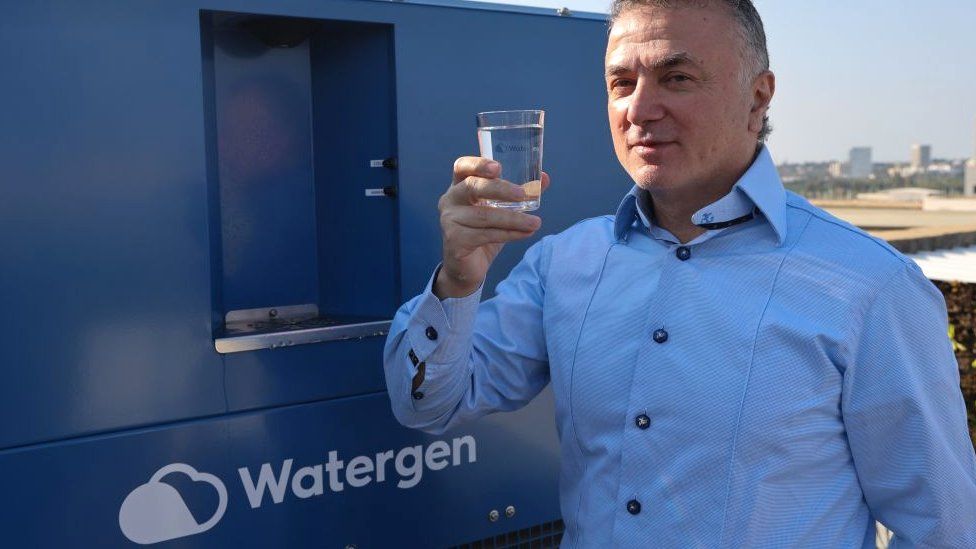
Pulling water out of thin air may sound like science fiction, but the technology is actually simpler than it seems. The Earth's atmosphere contains 13 billion tonnes of fresh water. Watergen's machines work by filtering this water vapour out of the air. He says if used correctly, Watergen's technology could spark a major shift within the water industry that could have a lasting impact on the planet.
"A big advantage of using atmospheric water is that there's no need to build water transportation, so no worries about heavy metals in pipes for example or cleaning contaminated water from the ground or polluting the planet with plastic bottles."
One obvious obstacle would appear to be air pollution, which has become a widespread cause for concern in some of the world's major cities. In the UK for example, research by Imperial College London found lead, which is toxic to the human body, still present in the city's air in 2021 despite it being banned in 1999.
However, this may not matter. A study conducted by scientists from Israel's Tel Aviv University found that even in urban areas such as Tel Aviv, it is possible to extract drinking water to a standard set by the World Health Organization. In other words, clean water can be converted from air that is dirty or polluted.
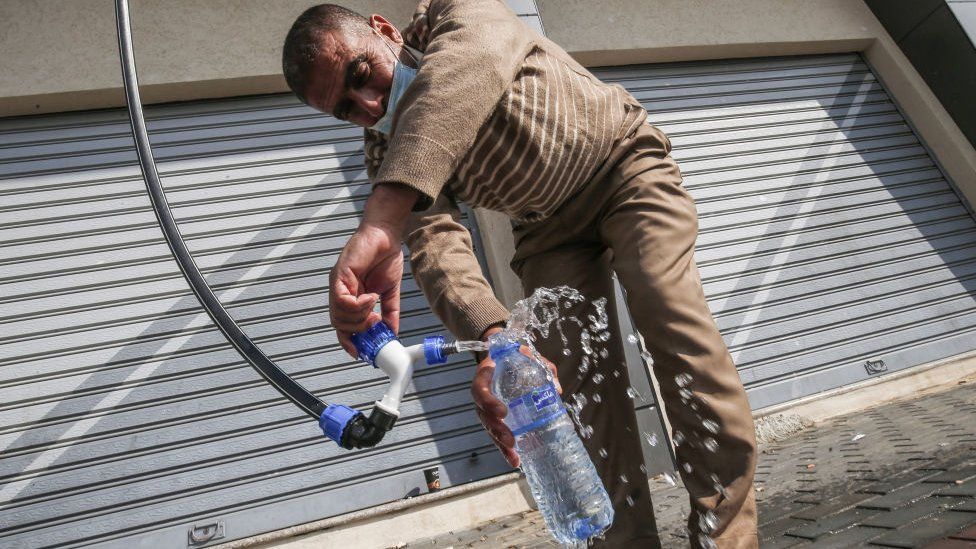
Watergen's largest machines can provide 6,000 litres of water in a day. It has already been used to support entire hospitals in the Gaza Strip and rural villages in central Africa, where people would otherwise have to walk hours to find water. It also helped Australia's government battle devastating bush fires in 2020 that killed 34 people and destroyed 3,500 homes.
"This is not just about saving lives, it's about improving the lives of millions," adds Mr Mirilashvili. "Even in developed countries some people don't drink clean water and it has a direct effect on health and agriculture."
Deadly pollution
According to the World Health Organization (WHO), more than two billion people only have access to water that is contaminated with faeces. Just one sip puts them at risk of illnesses such as cholera and typhoid, and it estimates around 500,000 people a year die as a result.
When it comes to finding clean water there is a resource in our oceans. Icebergs contain some of the world's purest water as the glaciers they come from formed thousands of years ago. The giant blocks of ice can be a hazard to shipping and can damage marine ecosystems with huge volumes of freshwater when they melt.
Harvesting them for profit first began in Canada, where it has become a big business along the country's east coast. But the practice has now reached other parts of the world.
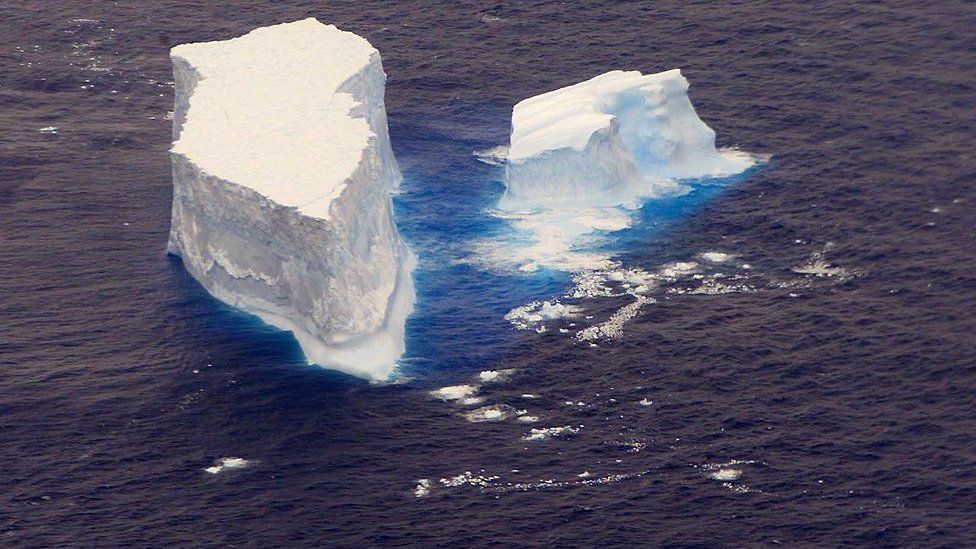
Entrepreneur and environmentalist, Abdulla Al-Shehi, is working with the United Arab Emirates' iceberg project. Water scarcity poses a great risk in the country, as climate change brings with it rising temperatures to what is already one of the hottest places on the planet.
"On average a gigantic iceberg can provide a million people water for 3-5 years," he claims. "So why not take advantage of what nature can offer us? I hope one day to bring icebergs to the Arabian Peninsula."
Yet the journey poses risks. Due to their size icebergs can flip over in transit, causing fatal accidents. They must be also wrapped in specially designed insulated material to reduce the melting rate during the journey. It is no surprise that the process can therefore be expensive.
The UAE Iceberg project will start by harvesting a smaller iceberg and taking it to Perth in Western Australia or Cape Town in South Africa.
"The estimated cost ranges from $60-80m (£42-57m) and the full project will likely cost around $150-200m," says Mr Al-Shehi.


New Tech Economy is a series exploring how technological innovation is set to shape the new emerging economic landscape.

Is the ocean the answer?
While the kinks are still worked out of iceberg harvesting, there are other more reliable methods using the world's oceans. In the past, many civilizations have removed salt from the seawater - a process called desalination - using heat.
Nowadays, desalinisation is done using seawater reverse osmosis. Some governments own desalination plants that provide water to the population, while others rely on private firms to run them.
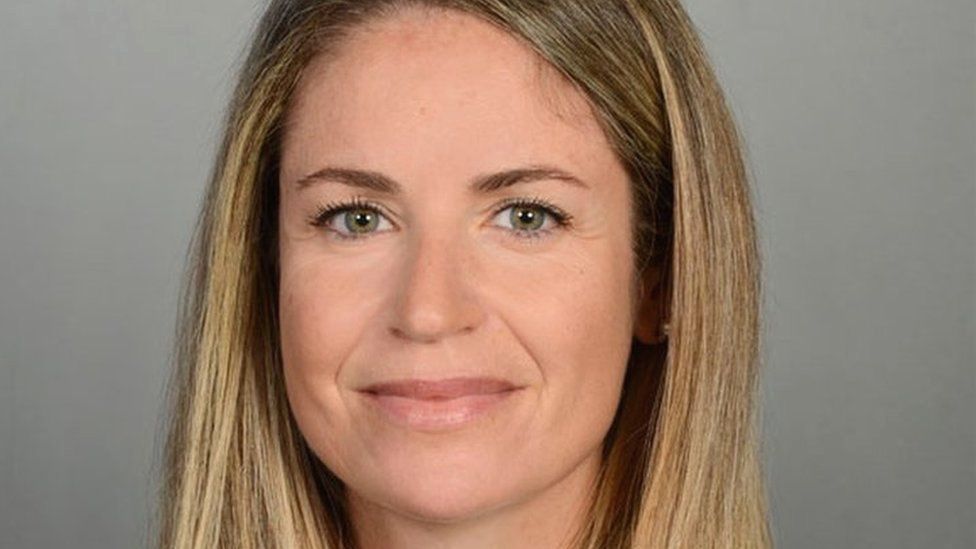
Water provider giant Dupont, based in Delaware, processes 25 million US gallons (94 million litres) of water every minute at its plants around the world.
"The process allows water to pass through a filter while salts get separated. As a result, two streams are generated, one with drinkable water and one with high levels of salt," says Verónica García Molina, global market leader of DuPont Water Solutions.
"The stream with high concentrations in salts is directed back to the sea, but thanks to proper dilution mechanisms and processes there is no impact in the sea."
Yet while modern plants may have little to no impact on the sea, the same cannot be said for older factories that still use less advanced desalination methods. These are still pumping high levels of brine back into the ocean which can wreak havoc on ecosystems by reducing oxygen levels and increasing salt content.
A large majority of these older plants are located in the Middle East, where 55% of desalination brine is pumped back into the oceans.
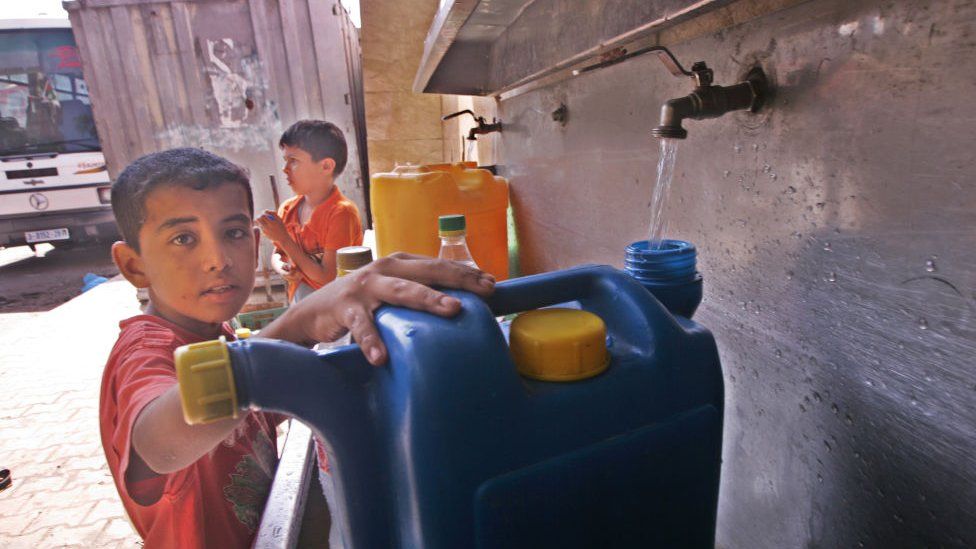
Another major criticism of desalination is that it takes a tremendous amount of energy to process seawater, usually driven by highly polluting fossil fuels.
However, Ms Molina says advances in technology in recent years have made it one of the most viable solutions to solving water shortages around the world.
"Energy required for seawater reverse osmosis has been reduced by more than three times in the last decades and today it consumes four-five times or less energy than the old thermal processes," she adds.
But it is not clear if these solutions will be enough. As global water resources grow increasingly scarce, the race is on for scientists to come up with other answers that have little to no impact on already-stressed ecosystems.
"world" - Google News
August 02, 2021 at 06:22AM
https://ift.tt/3fjZJWd
Finding answers to the world's drinking water crisis - BBC News
"world" - Google News
https://ift.tt/3d80zBJ
https://ift.tt/2WkdbyX
Bagikan Berita Ini














0 Response to "Finding answers to the world's drinking water crisis - BBC News"
Post a Comment